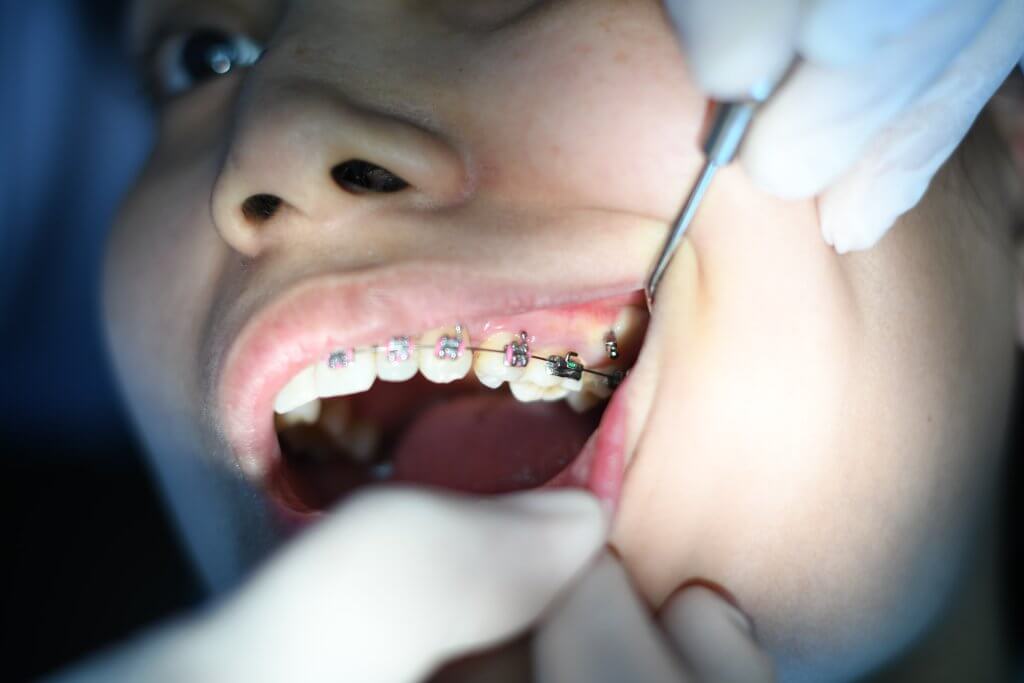
Tips to Save Money on Your Kid’s Braces
Orthodontic treatment, particularly braces, can significantly improve a child’s dental health and self-esteem. However, the cost of braces can sometimes be a concern for parents. The good news is that there are ways to save on children’s braces without compromising on the quality of treatment.
In this blog, we’ll explore several tips for parents to potentially reduce the financial burden of orthodontic treatment while still ensuring their child receives the best care possible.
Early Evaluation and Intervention
One of the best ways to save on braces is to address orthodontic issues early. Taking your child for an orthodontic evaluation at a young age, around seven years old, allows the orthodontist to identify potential problems and determine if early intervention is necessary. In some cases, early treatment can prevent more extensive and expensive procedures later on.
Choose the Right Orthodontist
Look for professionals who offer free initial consultations. This can help you assess their expertise and discuss potential treatment plans and costs, especially since an entire ortho treatment programme can last between 15 months to 18 months.
The Commonwealth Ombudsman stressed that if you commit your child to an orthodontic programme, your preferred orthodontist must furnish you with a full written breakdown of the treatment plan.
Research and select an experienced and reputable orthodontist for your child’s treatment.
Braces vs. Aligners
Traditional braces may not be the only option for your child’s orthodontic treatment. In some cases, clear aligners can be a more cost-effective alternative.
Aligners are removable, which can make oral hygiene easier and reduce the number of visits to the orthodontist for adjustments. Some proponents of aligners claim that the product eliminates the need for tooth extractions, which in cases are supposedly done to provide the braces with manoeuvre room.
However, an aligner treatment programme, like that offered by Invisalign and Trybyte, often involves providing the patient with over a dozen pairs of aligners. A pair is made to be worn for up to two weeks, gradually tightening the teeth to the proper position, then replaced with another pair.
Discuss with the orthodontist which option is best suited for your child’s needs and budget.
Flexible Payment Plans
Many orthodontists offer flexible payment plans to help parents manage the cost of braces. Enquire about instalment options that spread the expense over several months, making it more affordable for your family’s budget.
Flexible payments can be critical considering the price of the entire treatment programme and the data generated from the consultations.
According to Orthodontics Australia, traditional metal braces can cost between $6k to $9k while ceramic braces, where the brackets are made of ceramic material instead of steel, are slightly pricier at $6.5k-$9.5k, same as aligners. Lingual braces, which are braces installed at the back of the teeth, range from $9k to $15k.
It is not determined if the above costs are for either the upper or lower set of teeth, or both sets.
Dental Insurance or Health Funds
Check if your dental insurance or health fund covers orthodontic treatment for children. Some plans provide partial or full coverage for braces, significantly reducing your out-of-pocket expenses. Understand the terms and coverage limits of your policy before starting the treatment.
Government Subsidies or Assistance
Some states in Australia offer government subsidies or assistance programs for children’s orthodontic treatment, particularly for severe cases. Research local programs that might help reduce the financial burden.
Timing of Treatment
Consider the timing of your child’s orthodontic treatment. If possible, schedule the treatment during a time of the year when your family’s financial situation is more stable, such as after receiving a tax refund or work bonus.
Maintain Oral Health
Promote excellent oral health habits in your child from a young age. Regular dental check-ups and proper oral hygiene can prevent potential dental issues, reducing the need for extensive orthodontic treatment in the future.
The oral hygiene is critical though even when the braces are officially installed. Poor oral hygiene may affect the integrity of the braces in the sense that certain ingredients in food or drink damage the adhesive that sticks the bracket onto the tooth enamel.
Use Retainers Properly
After completing orthodontic treatment, make sure your child wears their retainers as directed by the orthodontist. Retainers help maintain the alignment of the teeth and prevent relapse, reducing the chances of needing additional orthodontic work later on.
Look for Special Offers or Promotions
Keep an eye out for special offers or promotions from orthodontic clinics. Some may provide discounts or incentives for new patients, making braces more affordable.
While orthodontic treatment for children can seem expensive, it is essential for their dental health and overall well-being. Combining the tips above with maintaining good oral health practices can help parents ensure their children receive the best orthodontic care.
UBUDGET, provided by UBOMI, empowers users to manage their finances by setting and monitoring budgets, thus giving them increased control. This is a formidable resource that can assist in accomplishing personal targets.
If you liked our “Tips to Save Money on Your Kid’s Braces” and find it useful, check our blogs regularly for more information and to get updates on UBOMI’s budget planner app.
DISCLAIMER: This article is for informational purposes only and does not constitute official dental advice. UBOMI has no working relationships with any orthodontist or dental industry stakeholder, and does not endorse any orthodontic solutions. Please consult your dentist for specific options.




